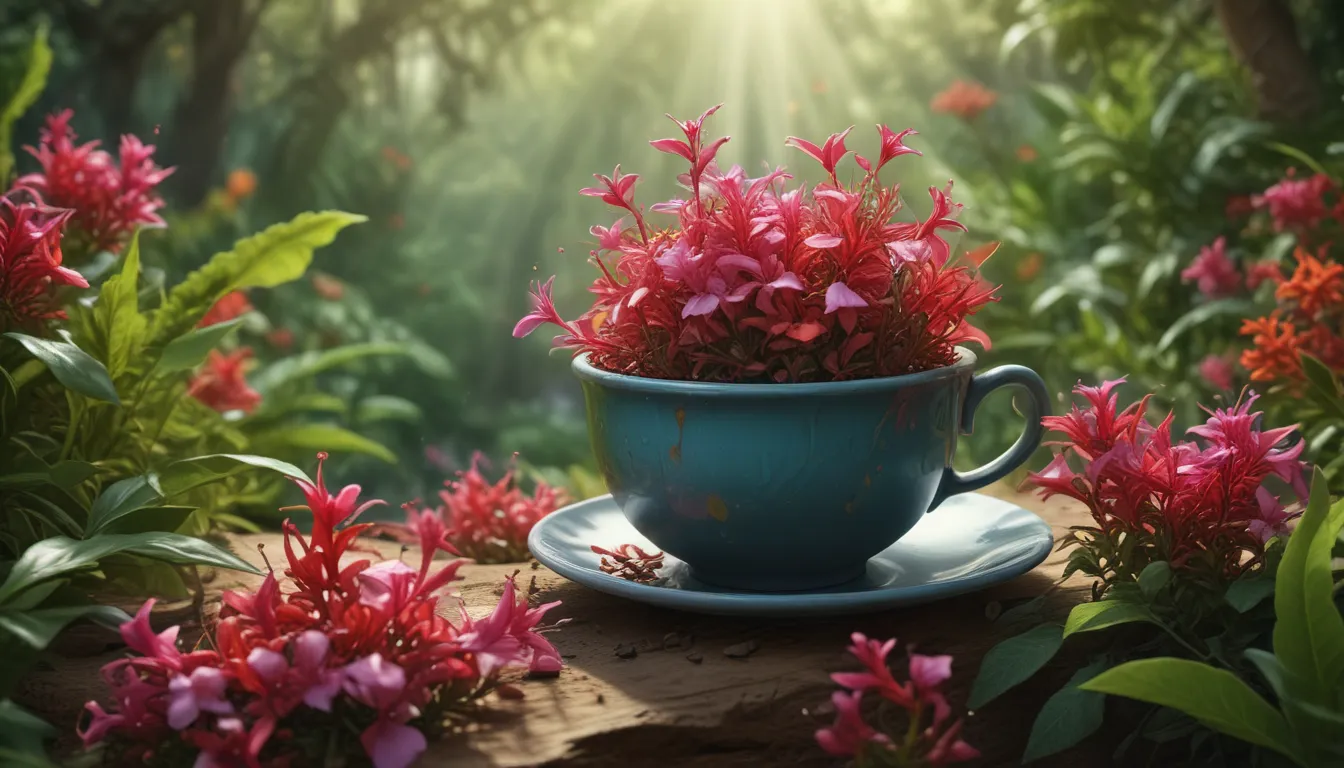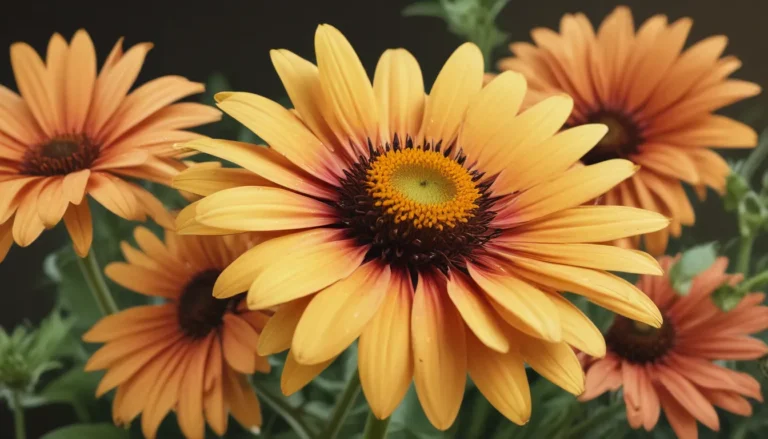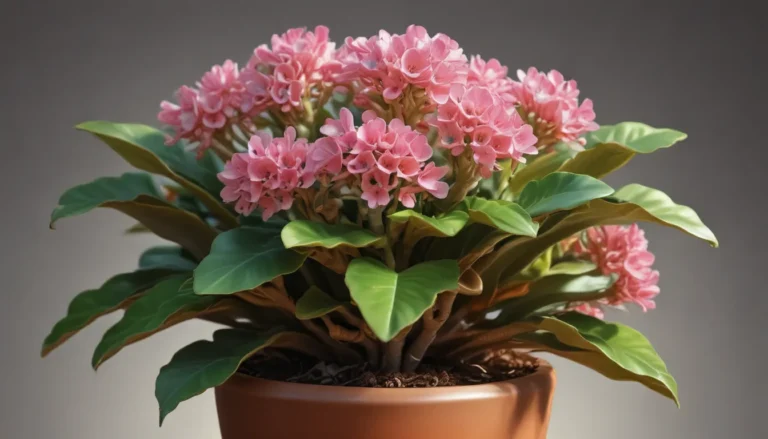The pictures we use in our articles might not show exactly what the words say. We choose these pictures to make you interested in reading more. The pictures work together with the words but don’t take their place. The words still tell you the important facts.
Are you ready to explore the hidden secrets of Cuphea, also known as "false heather"? Cuphea is a remarkable plant that often goes unnoticed in the gardening world, but its vibrant blooms, resilience in different climates, and unique charm make it a plant worth recognizing. Whether you're an enthusiastic gardener looking to diversify your collection or simply curious about the wonders of nature, Cuphea has something captivating to offer. In this article, we will unveil 16 surprising facts about Cuphea that will capture your attention and ignite your interest in this enchanting plant.
Delving into the World of Cuphea: Key Takeaways
- Cuphea, also known as "Mexican Heather," is a vibrant and low-maintenance plant native to Mexico and Central America. Its colorful flowers attract pollinators and songbirds, making it a delightful addition to any garden.
- With its deer-resistant properties, medicinal uses, and versatility in various landscaping applications, Cuphea is an easy-to-maintain plant that adds beauty and charm to outdoor spaces.
Uncovering the Beauty of Cuphea
Cuphea: The Mexican Heather
Scientifically known as Cuphea hyssopifolia, Cuphea earns its nickname, "Mexican Heather," due to its delicate purple flowers and heather-like appearance. Its aesthetic appeal adds a touch of elegance to any garden landscape.
Native to Mexico and Central America
Originating from Mexico and Central America, Cuphea thrives in warm and tropical climates, making it a popular choice for gardens in those regions. Its adaptability to different environments showcases its resilience and versatility.
A Colorful Palette of Cuphea
While purple is the most common color of Cuphea flowers, you can discover a wide range of hues, including pink, white, red, and orange blooms. This diverse color palette creates a vibrant and lively atmosphere in any garden setting.
A Pollinator’s Paradise
The nectar-rich flowers of Cuphea attract a variety of pollinators, such as bees, butterflies, and hummingbirds. By planting Cuphea in your garden, you not only enhance its beauty but also support the health and sustainability of these vital pollinator species.
Embracing the Versatility of Cuphea
Thriving in Heat and Drought
Cuphea's adaptation to hot and dry conditions makes it an ideal choice for gardens in arid climates. Its ability to withstand prolonged periods of heat with minimal water requirements showcases its resilience and low-maintenance nature.
Perfect for Rock Gardens
Due to its compact size and tolerance for poor soil conditions, Cuphea is often used in rock gardens or as ground cover. Its small, colorful flowers create a striking contrast against rocky landscapes, adding visual interest to the garden.
Attracting Beneficial Insects
In addition to pollinators, Cuphea flowers attract beneficial insects like ladybugs and lacewings. These insects play a crucial role in controlling garden pests, promoting a natural and balanced ecosystem in your garden.
Container Gardening with Cuphea
Thanks to its compact size and adaptability, Cuphea can thrive in containers, making it a versatile choice for patio gardens and balconies. Enjoying the beauty of Cuphea is now possible even in limited spaces.
Deer-Resistant Properties
One of the advantages of planting Cuphea is its deer-resistant properties. Deer tend to avoid this plant, making it an intelligent choice for areas with high deer populations. Your garden will remain beautiful and untouched by grazing deer.
Unveiling the Secrets of Cuphea
Medicinal Uses of Cuphea
In traditional medicine, Cuphea has been used to treat various ailments, including digestive issues and skin conditions. Its leaves and flowers contain beneficial compounds known for their healing properties, showcasing the plant's multifaceted nature.
Easy Propagation of Cuphea
Cuphea can be effortlessly propagated from stem cuttings, making it a fantastic plant for gardeners looking to expand their collection or share it with others. Its ease of propagation adds to its charm and accessibility for gardening enthusiasts.
Enchanting Borders and Edging
With its compact growth habit and profusion of flowers, Cuphea is often used as a border or edging plant in garden beds. Its colorful presence adds charm and vibrancy to the overall landscape design, creating a visually pleasing garden space.
A Haven for Songbirds
Cuphea's presence in your garden can attract songbirds, filling the air with delightful chirping and tweeting. The vibrant flowers and abundant nectar serve as a magnet for these melodious creatures, enhancing the auditory experience in your outdoor space.
Extended Blooming Season
Cuphea is celebrated for its long blooming season, with vibrant flowers gracing the garden from spring to fall. This prolonged period of bloom ensures a continuous display of color and beauty, delighting both gardeners and visitors alike.
Versatile Landscaping with Cuphea
Whether used as a border, ground cover, hanging basket, or container plant, Cuphea shines in all landscaping applications. Its versatility allows it to adapt to various design styles and gardening preferences, making it a versatile and compatible plant for any garden.
Easy Maintenance of Cuphea
With its natural resilience and low maintenance requirements, Cuphea is a favorite among busy gardeners. Simply provide regular watering, moderate sunlight, and occasional pruning to shape the plant, and you'll have a thriving Cuphea plant in your garden in no time.
Embracing the Beauty of Cuphea: Conclusion
In conclusion, Cuphea stands out as a fascinating and versatile plant that offers numerous benefits and surprises to gardeners and nature enthusiasts alike. From its captivating flowers to its ability to attract pollinators, Cuphea is a delightful addition to any garden, adding charm and vibrancy to outdoor spaces. Whether you're an experienced gardener or a novice, Cuphea's adaptability to various climates and its low maintenance requirements make it a plant that anyone can enjoy. Consider adding Cuphea to your garden and experience the joy of growing this remarkable plant.
Exploring Further: FAQs
Q: What is Cuphea?
A: Cuphea is a genus of flowering plants belonging to the family Lythraceae, consisting of approximately 260 species primarily found in tropical and subtropical regions worldwide.
Q: How tall does Cuphea grow?
A: The height of Cuphea plants varies by species, ranging from 6 inches to 3 feet tall. Some varieties are compact and low-growing, while others can reach taller heights, offering a range of options for gardeners.
Q: Does Cuphea attract pollinators?
A: Yes, Cuphea is known for attracting pollinators, especially hummingbirds and butterflies. Its tubular flowers and bright colors are irresistible to these pollinators, making it a popular choice for butterfly and hummingbird gardens.
Q: How often should Cuphea be watered?
A: Cuphea plants prefer moderate watering, allowing the topsoil to dry out between waterings to prevent overwatering. Water the plant when the top inch of soil feels dry to the touch, maintaining a healthy watering schedule.
Q: Can Cuphea be grown indoors?
A: Yes, some Cuphea species can thrive as houseplants indoors, requiring bright, indirect light and well-draining soil. Regular watering and occasional fertilization will support the growth of Cuphea plants indoors.
Q: How do I propagate Cuphea?
A: Cuphea can be propagated through stem cuttings, where a healthy cutting is placed in a prepared potting mix until roots develop. Transplant the cutting into a larger container or the garden, expanding your Cuphea collection.
Q: Are there specific care requirements for Cuphea?
A: Cuphea plants generally thrive in full sun to partial shade and well-draining soil. Regular pruning helps maintain shape and encourages blooming, while fertilizing every 4-6 weeks during the growing season promotes healthy growth.
Q: Can Cuphea be used as a culinary herb?
A: Although Cuphea leaves and flowers have a pleasant scent, they are not commonly used as culinary herbs in mainstream cooking. However, some Cuphea species may have traditional uses in local cuisines for their flavor or medicinal properties.
Trustworthy Content for Your Exploration
Our commitment to delivering trustworthy and engaging content is at the core of what we do. Each fact shared on our site is contributed by real users like you, bringing a wealth of diverse insights and information. As you embark on your journey of exploration and learning with us, rest assured that our dedicated editors meticulously review each submission to ensure the highest standards of accuracy and reliability. Delve into the world of Cuphea with confidence, knowing that you are discovering fascinating and credible information to enhance your gardening experience.
Discover the enchanting world of Cuphea and immerse yourself in the beauty and surprises this captivating plant has to offer. Whether you're a seasoned gardener or a novice, Cuphea's vibrant blooms, versatility, and ease of maintenance make it a perfect addition to any garden. Embrace the joy of growing this remarkable plant and witness the wonders of nature flourishing in your outdoor sanctuary.






